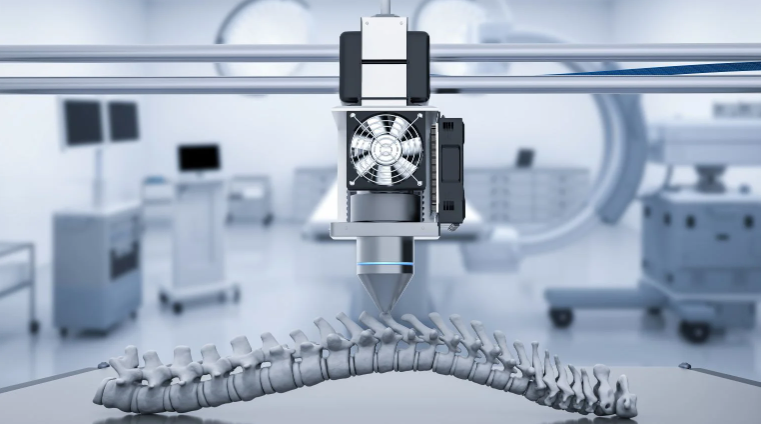3D PRINTING
Additive manufacturing, also known as 3D printing, is the technique of building an object from three-dimensional data by layering materials. This makes it feasible to create devices that would be extremely challenging or impossible to create using standard manufacturing methods, such as those with complex structures, internal cavities, and unusual geometries. Devices are often made in small quantities, and designs can be improved iteratively to create lightweight, cost-effective medical devices with internal functionality by reducing the number of components, weight, and size.
With diverse applications in orthopedicThe number of organizations offering 3D printing software, hardware, materials, and services will rise as investments in technology continue to rise across all industries. , dental, interbody, surgical, and individualized equipment, 3D printing revenue in the medical devices sector has been continuously rising since 2018. Custom implants and prostheses can be made using 3D printing to better fit a patient’s needs and increase comfort and functionality.
The number of organisations offering 3D printing software, hardware, materials, and services will rise as investments in technology continue to rise across all industries.
By providing fresh potential for personalization and small-batch manufacture of challenging items, 3D printing enhances conventional manufacturing. It is the ideal tool for quick prototyping since it allows for significant design flexibility and incurs little to no extra expense for increased design complexity. Cutting the time and cost of the development process for new gadgets in half, can help.
With deeper study, 3D printing might also result in printed “smart materials” with geometries that are virtually unattainable with existing techniques. Smart materials are interesting for medical applications because they can give existing equipment new qualities and better performance. Smart materials react to environmental inputs like heat, moisture, or sound.

